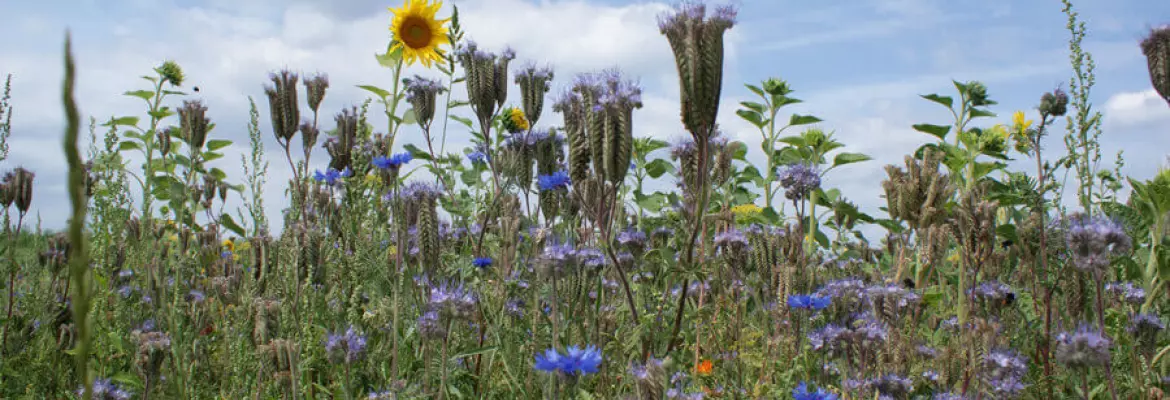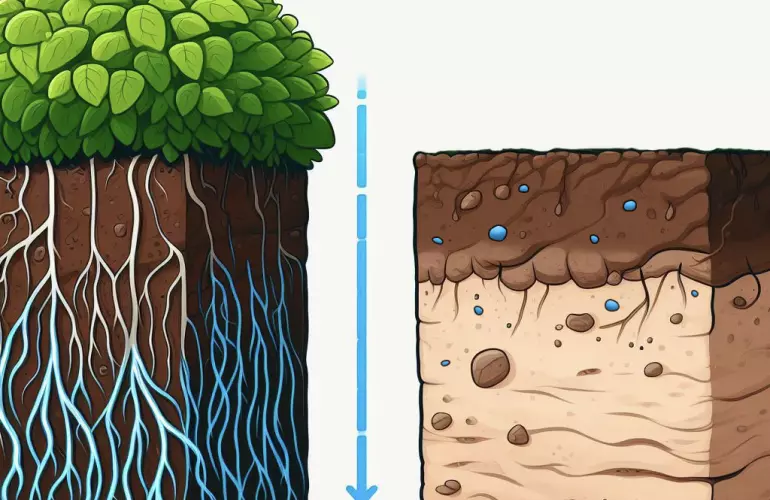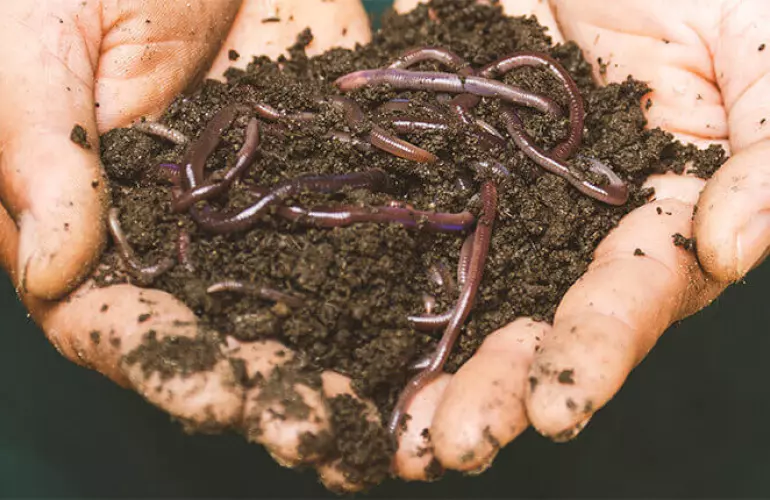
By preserving the structure of the soil, Min-Till methods contribute to improving the life of the soil and water management, as well as increasing biodiversity and carbon storage. However, all of these benefits for the environment should be considered in light of the fact that chemical products are often needed to control weeds.
The structure of the soil is preserved and contains more organic matter
No-plough methods and Min-Till reduce soil disturbance in the top 40 centimetres leading to an increase in its natural fertility.
By using no-plough methods long-term, organic matter in the soil can increase by 25 to 50 % (source, Agro-League). And more importantly, as highlighted in a 47-year comparative study by Arvalis, at the Boigneville (91) site in France, the distribution of organic matter is different when shallow cultivation or direct drilling techniques are used. No-plough crop-management methods increase the carbon content in the topsoil (0-10cm) and decrease it deeper down (10-33cm).
Better water management and less risk of erosion
The concentration of organic matter at the surface offers advantages such as reducing slaking, water run-off, and erosion. As the soil’s structure is preserved through the use of no-plough techniques, rainwater infiltrates the soil better and increases water storage for the crop. More generally, improving the structure of the soil allows better root development and optimum crop nutrition.

How do Min-Till methods improve the structure of the soil?
- Mechanical operations, such as with soil-looseners, loosen the soil without mixing the layers. Loosening the soil makes it porous which enhances root development and the exchange of gases.
- Min-Till techniques minimise the number of passes with agricultural machines which reduces soil compaction, especially by avoiding plough pans.
- Min-Till combined with tap-root-type plant cover makes the soil more porous.
Renewed biological activity
The topsoil’s biodiversity is negatively affected when the soil is turned. By not using the plough, the content of organic matter in the surface layers of the soil increases which revives biological activity. Insects and earthworm facilitate drainage, root development, soil loosening, and aeration. In addition, micro-organisms contribute to carbon and nitrogen production as well as mineralisation and fungi, including mycelium which recycles nutrients and carbon.

Earthworms detest ploughed land
Working the soil disturbs earthworms and destroys their pathways, especially in the autumn during reproduction. The extent to which worms are impacted depends on the class: epigeic worms that live at the surface (1-5cm) are disturbed the most, while deeper-living endogenous worms are less affected.
The downside of using chemicals to control weeds and pests
Despite the many environmental advantages of using Min-Till methods, weed management and the use of herbicides needs to be considered as there is more weed growth with these methods. Instead of using plant-protection products, farmers can envisage creating an alternative approach to the chemical one, which consists in keeping the soil covered in mulch all year round. Unfortunately, this can be tricky to implement with crops like maize, and it creates a favourable environment for pests such as slugs, which also need to be treated.
